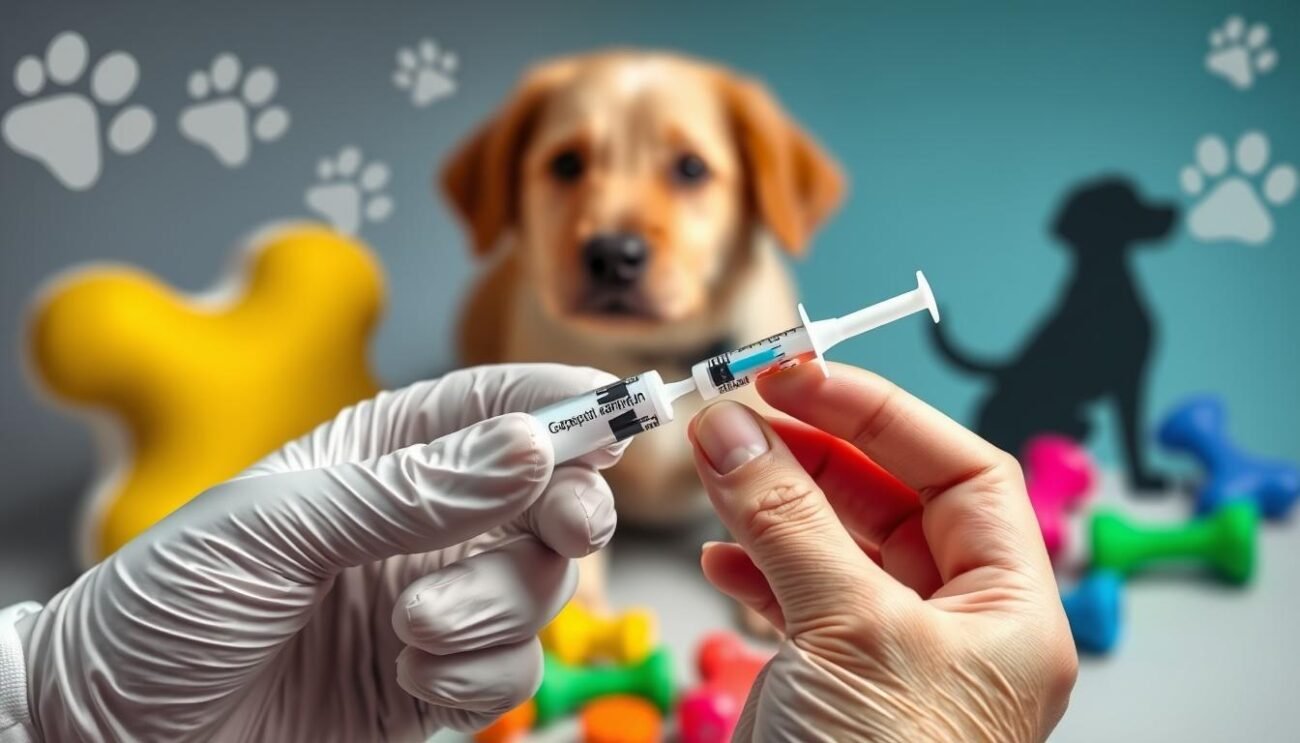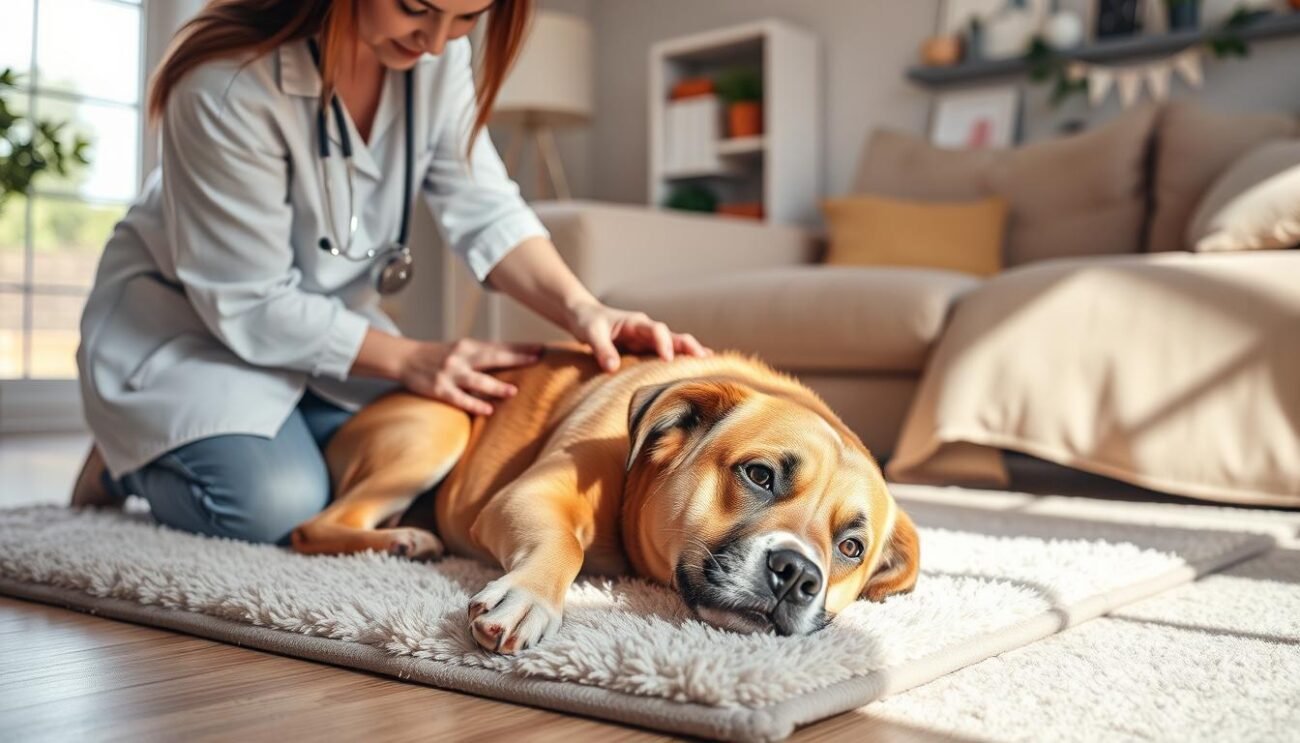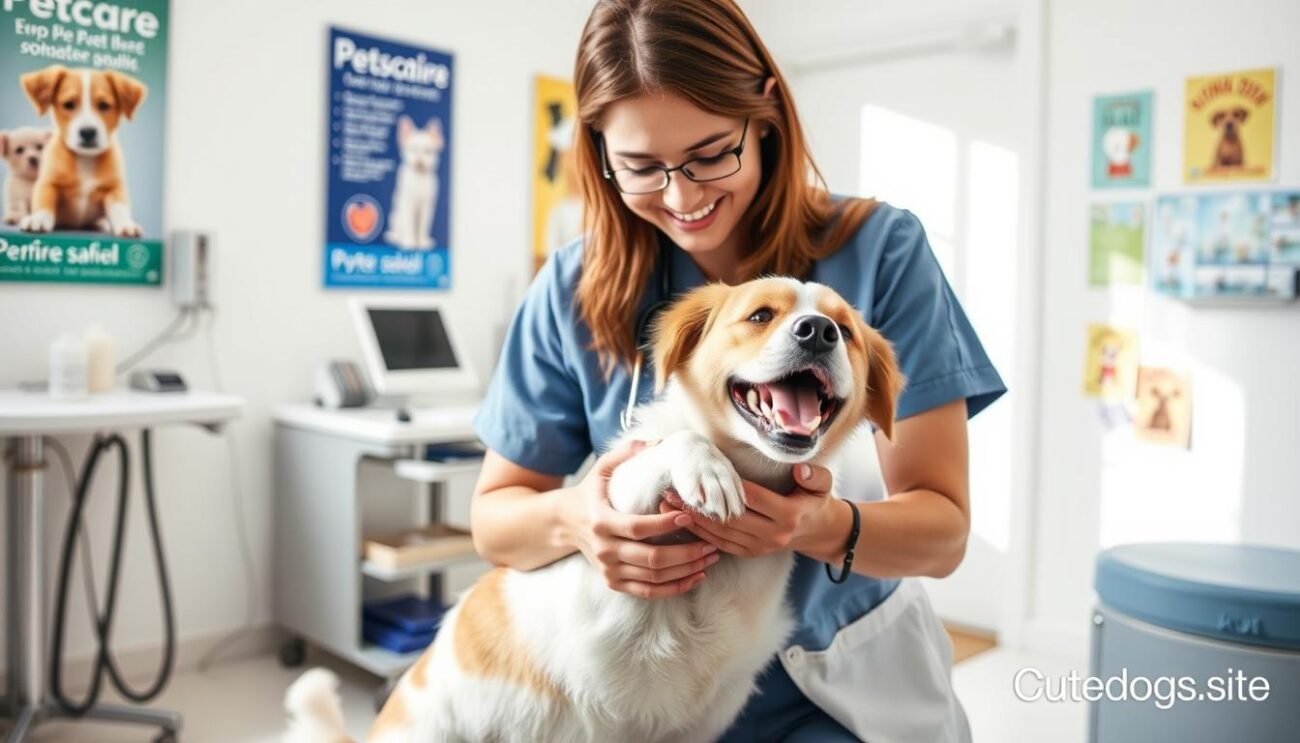Gabapentin can be administered for the treatment of nerve pain in humans. It is also used in veterinary medicine for various health problems in dogs. However, the owners need to know how this drug operates, its side effects, and what else can be done. This article will provide all information on gabapentin for dogs including the safety and proper dosage of this drug in dogs This may come as a surprise, especially if you are familiar with its applications.

Key Takeaways
- Gabapentin is a commonly prescribed medication for dogs, used to manage conditions like neuropathic pain, seizures, and anxiety.
- While generally safe when administered correctly, gabapentin can potentially cause side effects in dogs, including drowsiness, dizziness, and gastrointestinal upset.
- Proper dosage and monitoring are crucial to avoid gabapentin toxicity or overdose, which can be life-threatening.
- Alternative treatments, such as natural remedies and other prescription medications, may be considered for dogs based on their specific needs and veterinary recommendations.
- Pet owners should work closely with their veterinarians to ensure the safe and effective use of gabapentin for their canine companions.
What is Gabapentin and How is it Used for Dogs?
Gabapentin is one of the pharmaceuticals used in the animals. Initially, it was developed for seizure disorders. Now, it helps with many medical problems in the canine species. Knowing how it works can be beneficial to both owners of pets and veterinarians.
Understanding Gabapentin as a Medication
Originally, this medication was aimed at the control of seizures only. Although controlling seizures is the main use of this medication, it offers assistance for chronic pain, and behavioral problems in dogs that include anxiety and aggression.
Common Uses of Gabapentin in Veterinary Medicine
Seizure management: Gabapentin is frequently utilized as adjunctive treatment in the medical therapy for seizures in epileptic dogs.
Chronic pain relief: Gabapentin has also been proven beneficial in practices managing conditions relating to gabapentin dog medication, aka osteoarthritis, neuropathic pain, or several cancers.
Behavioral modification: In certain situations, the requirement may arise and the administration of gabapentin may be employed to assist in behavioral modification of anxiety, aggression, or any such undesirable outbursts in canine patients.
Gabapentin uses in dogs over the years includes its relevance in the management and treatment of various conditions in dogs affected.
Understanding gabapentin as a canine medication helps vets and pet owners decide if it’s right for their dogs.
Can Gabapentin Kill a Dog?
As a pet owner, keeping your furry friend safe is key. You might wonder, “Can gabapentin kill a dog?” The answer is not straightforward. It depends on several factors.
Gabapentin is often given to dogs and is usually safe at the right dose. But, if a dog takes too much or has a bad reaction, it can be very dangerous.
| Potential Risks of Gabapentin for Dogs | Factors Affecting Toxicity |
|---|---|
| Lethal gabapentin dose for dogs: A dose of 100-200 mg/kg can be deadly, but it varies by dog. Gabapentin toxicity in dogs: Signs include drowsiness, clumsiness, and trouble breathing. Gabapentin overdose in dogs: It can cause coma and even death. | Dog’s size and weight Underlying health conditions Interactions with other medications Dosage and frequency of administration |
It’s vital to work with your vet to use gabapentin safely for your dog. Always stick to the dosage and watch for any bad reactions. If you think your dog has had too much gabapentin, get help right away.

Being a responsible pet owner means knowing the risks and taking steps to keep your dog safe. By staying informed and working with your vet, you can make sure gabapentin is used safely for your dog’s health.
Potential Side Effects of Gabapentin for Dogs
Gabapentin is usually safe for dogs, but it’s good to know about possible side effects. Knowing about gabapentin side effects dogs helps you make the best choices for your pet. This ensures your dog stays healthy and happy.
Common Side Effects of Gabapentin in Canines
The most common gabapentin side effects on canines are:
- Drowsiness and lethargy
- Ataxia (lack of coordination)
- Gastrointestinal issues, such as vomiting or diarrhea
- Nausea
- Increased appetite
These risks of gabapentin for dogs are usually mild. They often go away as your dog gets used to the medicine. Still, watching your pet closely and telling your vet about any issues is key.
“Gabapentin is generally well-tolerated in dogs, but pet owners should be aware of potential side effects and monitor their pets closely during treatment.”
In rare cases, dogs might experience serious gabapentin side effects dogs. This includes breathing problems, tremors, or seizures. If you see any of these, call your vet fast.

Talking often with your vet about your dog’s gabapentin use is important. This helps keep the medicine safe and effective for your pet.
Gabapentin Dosage for Dogs: Maintaining Safety
When giving gabapentin to dogs, the right dose is key. Your vet will decide the best gabapentin dosage for your dog. It’s vital to follow their advice to keep your dog safe and healthy.
The usual gabapentin dosage for dogs is 5 to 15 milligrams per kilogram of body weight. This is given two to three times a day. But, your vet might change the dose based on how your dog reacts and their health.
Never give more gabapentin than your vet says. Overdosing on gabapentin can cause bad side effects. Always give the medication as your vet tells you to.
| Dog Weight | Typical Gabapentin Dosage Range |
|---|---|
| 10 lbs (4.5 kg) | 22.5 – 67.5 mg per day |
| 20 lbs (9 kg) | 45 – 135 mg per day |
| 50 lbs (22.7 kg) | 113 – 340 mg per day |
| 80 lbs (36.3 kg) | 182 – 545 mg per day |
Remember, the safe gabapentin dosage for dogs can change. Always talk to your vet before starting or changing your dog’s meds. The right dose and watching your dog closely are key to their safety and happiness.

Signs of Gabapentin Toxicity or Overdose in Dogs
Gabapentin is a common drug for dogs but can be dangerous if not used right. Knowing the signs of gabapentin toxicity or overdose is key. This ensures your dog gets the help they need fast.
Symptoms of Gabapentin Poisoning in Pets
If your dog takes too much gabapentin, or gets into it by accident, look out for these signs:
- Drowsiness and lethargy
- Lack of coordination and ataxia
- Respiratory depression
- Vomiting and nausea
- Diarrhea
- Tremors or seizures
These symptoms can get worse fast. If you think your dog has had too much gabapentin, call your vet right away. Quick action can make a big difference.

“Recognizing the signs of gabapentin toxicity in dogs can save your pet’s life. Don’t hesitate to seek veterinary care if you notice any unusual symptoms.”
Knowing about the dangers and signs of gabapentin poisoning helps keep your dog safe. Always choose caution when it comes to your dog’s health.
Gabapentin for Dog Pain Management
Gabapentin is a key tool in managing chronic pain in dogs. It helps reduce pain and improves their quality of life. Dogs with various painful conditions find relief with this medication.
Gabapentin changes how pain signals are sent in the nervous system. This makes it great for treating different types of pain in dogs. Veterinarians use it for:
- Osteoarthritis and joint pain
- Intervertebral disk disease
- Neuropathic pain from nerve injuries or diseases
- Post-operative pain management
- Chronic pain associated with cancer or other terminal illnesses
Using gabapentin as part of a pain plan can greatly help your dog. It can make them more comfortable, improve their movement, and boost their overall health. Always work with your vet to find the right dose and balance pain relief with side effects.
| Condition | Gabapentin Use |
|---|---|
| Osteoarthritis | Helps reduce inflammation and nerve-related pain |
| Intervertebral Disk Disease | Alleviates spinal cord and nerve root pain |
| Neuropathic Pain | Modulates pain signals in the nervous system |
| Post-Operative Pain | Provides additional pain relief during recovery |
| Chronic Cancer Pain | Helps manage discomfort in terminal cases |
Knowing how gabapentin works in vet medicine can help you and your vet. Together, you can explore its benefits for your dog’s pain needs.

Risks and Precautions with Gabapentin for Dogs
Gabapentin is usually safe for dogs, but it’s important to know the risks. As with any medicine, there are gabapentin risks dogs that pet owners should be aware of.
Potential Interactions and Contraindications
One big worry with gabapentin and dog safety is how it might react with other medicines. Gabapentin could interact with some anti-seizure drugs, antidepressants, and pain meds. Always tell your vet about any other meds or supplements your dog is on to avoid potential interactions with gabapentin in dogs.
Also, dogs with kidney or liver problems might not be good candidates for gabapentin. Your vet might need to adjust the dose or find another treatment to keep your dog safe.
| Potential Interactions | Contraindications |
|---|---|
| Anti-seizure medications Antidepressants Pain medications | Kidney disease Liver disease |
It’s key to work closely with your vet to watch how your dog reacts to gabapentin. If any side effects or problems come up, address them right away. By staying vigilant and following your vet’s advice, you can make sure gabapentin is safe and effective for your dog.
“Always consult with your veterinarian before starting any new medication, and be sure to disclose any other medications or supplements your dog is currently taking.”
Alternatives to Gabapentin for Dogs
If you’re looking for alternatives to gabapentin for your dog, there are many options. You can try natural remedies or prescription drugs. These can help with pain, anxiety, or other issues in dogs. They offer a wider range of treatments.
Natural Pain Relief Options for Dogs
There are many natural ways to ease your dog’s pain. These options are safer than some medicines. Here are a few:
- Omega-3 fatty acids in fish oil can cut down on inflammation and pain.
- Glucosamine and chondroitin supplements can help with joint health and movement.
- Turmeric, a strong anti-inflammatory, can be added to your dog’s food.
- Acupuncture and massage can help relax and ease pain.
Prescription Medications for Canine Pain Management
If natural remedies don’t work, your vet might suggest prescription drugs. These are gabapentin alternatives for dogs. Some options include:
- NSAIDs like carprofen or meloxicam to lessen inflammation and pain.
- Opioid analgesics, such as tramadol or codeine, for serious pain.
- Antidepressants like amitriptyline or fluoxetine for anxiety-related pain or discomfort.
It’s key to talk to your vet about the best natural pain relief options for dogs or prescription medications for canine pain management. They’ll choose what’s best for your dog’s specific needs and health.

“Exploring alternative therapies can provide a holistic approach to your dog’s well-being and help them find the relief they need.”
Gabapentin Safety for Dogs: Minimizing Risks
As a pet owner, keeping your dog safe and healthy is very important. When giving gabapentin, knowing how to avoid risks of gabapentin for dogs is key. By following some simple steps, you can use this medication safely and effectively.
First, getting the right dose is crucial for gabapentin safety in dogs. Always talk to your vet to find out the right amount for your dog. Giving too much can harm your dog, so stick to what your vet says.
Watching your dog closely is also important. Look for any changes in how they act, eat, or feel. If you see any bad side effects, tell your vet right away. They might need to change the dose or find another way to help your dog.
Talking openly with your vet is also vital for minimizing the risks of gabapentin for dogs. Share any worries or questions you have. Also, tell your vet about any other medicines or supplements your dog is taking. This helps your vet make sure gabapentin is safe for your dog.
By following these tips and working with your vet, you can keep your dog safe while using gabapentin. Always put your dog’s safety first to keep them happy and healthy.

| Key Considerations for Gabapentin Safety in Dogs | Recommended Practices |
|---|---|
| Dosage | Consult veterinarian, adhere to prescribed instructions |
| Monitoring | Observe for side effects, report changes to veterinarian |
| Communication | Discuss concerns, inform about other medications |
Monitoring Your Dog While on Gabapentin
When your dog is on gabapentin, it’s crucial to keep a close eye. Watch for any changes in their behavior. This ensures their safety and well-being. Be ready to adjust the treatment or seek vet help if needed.
Knowing the signs to watch for when giving gabapentin to dogs is important. Side effects like drowsiness, loss of coordination, vomiting, or changes in appetite can happen. Notice any unusual behavior or changes in their energy and movement.
- Observe your dog’s activity level and mobility
- Monitor their eating and drinking habits
- Look for signs of nausea or gastrointestinal issues
- Watch for changes in their sleep or alertness
Keeping a detailed log of your observations is helpful. It can show any trends or concerns. This info is key when talking to your vet about your dog’s treatment.
| Symptom | Potential Cause | Action to Take |
|---|---|---|
| Drowsiness | Normal side effect of gabapentin | Monitor closely, but no immediate action required |
| Loss of coordination | Possible side effect of gabapentin | Consult your veterinarian for guidance |
| Vomiting | Potential side effect or unrelated issue | Contact your veterinarian for advice |
| Changes in appetite | Normal or potential side effect | Observe closely and report significant changes |
Being vigilant and proactive in monitoring dogs on gabapentin is key. It ensures your pet’s safety and the best response to the medication. By watching for signs to watch for when giving gabapentin to dogs, you can work with your vet to adjust the treatment. This provides your furry friend with the best care.

When to Seek Veterinary Assistance
As a pet owner, knowing when to seek vet help is key. This is true when your dog is on gabapentin. It’s important to watch how your dog reacts to this medicine. This ensures they stay safe and healthy.
If you see any of these signs, it’s time to contact your vet right away:
- Excessive drowsiness or lethargy
- Difficulty walking or loss of coordination
- Vomiting, diarrhea, or loss of appetite
- Signs of an allergic reaction, such as facial swelling or rash
- Changes in your dog’s behavior or mood, such as increased aggression or anxiety
If you think your dog has accidentally ingested too much gabapentin, act fast. Contact your vet immediately. Too much gabapentin can be very dangerous for dogs.
Your vet is the best person to talk to about gabapentin for your dog. If you have any worries or questions, don’t hesitate to reach out. They can help you understand when to contact vet about gabapentin for dogs.

Conclusion
Gabapentin can be a great help for dogs with different health issues. But, it’s important to work closely with your vet. This way, you can keep your dog safe and healthy.
When using gabapentin, watch how your dog reacts. Look out for any bad side effects. And always follow your vet’s advice on how much to give.
There are other ways to help your dog too. You might consider natural remedies or other medicines. This can help meet your dog’s specific needs.
Deciding to use gabapentin should always be a team effort. Talk to your vet about what’s best for your dog. They can give you advice that fits your pet’s needs. This way, you can make sure gabapentin is a good choice for your dog.
FAQ
Can gabapentin kill a dog?
Gabapentin is usually safe for dogs when used right. But, too much can be dangerous. The size, age, and health of the dog matter. Always follow your vet’s advice when giving gabapentin.
What are the side effects of gabapentin in dogs?
Dogs might feel sleepy, unsteady, or have stomach problems like vomiting. They could also feel very tired or have trouble breathing. Watch your dog closely for any bad reactions.
What is the appropriate gabapentin dosage for dogs?
Dogs usually get 5 to 20 mg of gabapentin per pound, 1-3 times a day. But, it depends on the dog’s health. Always follow your vet’s advice.
What are the signs of gabapentin toxicity or overdose in dogs?
Signs of too much gabapentin include deep sleep, trouble moving, and breathing problems. If you think your dog has too much, get help fast. It’s very serious.
How is gabapentin used to manage pain in dogs?
Gabapentin helps with long-term pain in dogs. This includes pain from arthritis, nerve issues, or after surgery. It helps make your dog more comfortable.
What are the potential risks and precautions when giving gabapentin to dogs?
Gabapentin can interact with other medicines and might not be good for some health issues. It’s important to give the right dose. Talk to your vet about your dog’s health before starting gabapentin.
What are some alternatives to gabapentin for dogs?
Instead of gabapentin, you could try omega-3s, CBD oil, or herbal supplements. Or, your vet might suggest other medicines. They can help find the best option for your dog.
When should I contact my veterinarian about my dog’s gabapentin treatment?
Call your vet if your dog shows any side effects or changes. Or if you have any worries about gabapentin. Talking to your vet is key to keeping your dog healthy.






